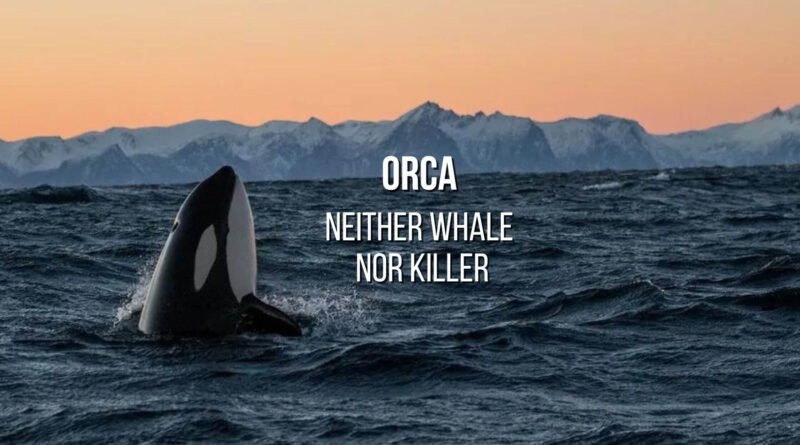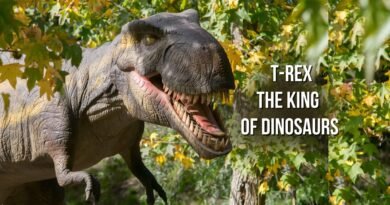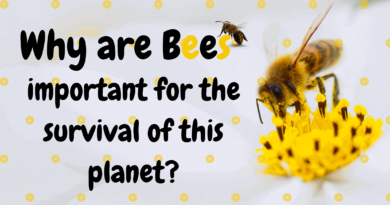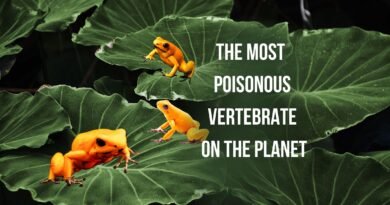Orca – neither whale nor killer
Most likely you’ve heard of Orca, the killer whale, haven’t you? Among so much fake news we have received lately, perhaps this is the biggest one in nature because orcas are not whales nor killers. Let’s get to know a little more about them. You will be amazed by the truth about these social and intelligent animals.

Origin of the term “killer whale”
This term was popularized due to the movie “Orca” also known as “Orca, the Killer Whale”, from the 1970s.
However, Spanish fishermen in the 18th century already called them killers for noticing them hunting other whales in groups. Yes, they can kill other whales to feed themselves, including whales much bigger than them, like the blue whale, for example. But humans are off their menu. Human incidents have only been recorded with orcas in captivity.
In 2019, in South Australia, around twenty orcas chased and killed a blue whale. By way of comparison, a blue whale measures about 98 feet and weighs more than 10 tons while an orca measures a maximum of 30 feet and weighs an average of 3 tons. The secret to the success of these hunts is working together.
Orcas are not whales
Despite being known as Orca whales, they are actually from the Delphinidae family. Orcas, scientifically named Orcinus orca, are the largest member of the dolphin family. And it is not entirely wrong to call them whales, since dolphins and whales are part of the same order, the cetaceans. One of the main differences between whales and orcas is that: orcas, like dolphins, have teeth and whales don’t. Did you know that whales don’t have teeth? Interesting, right?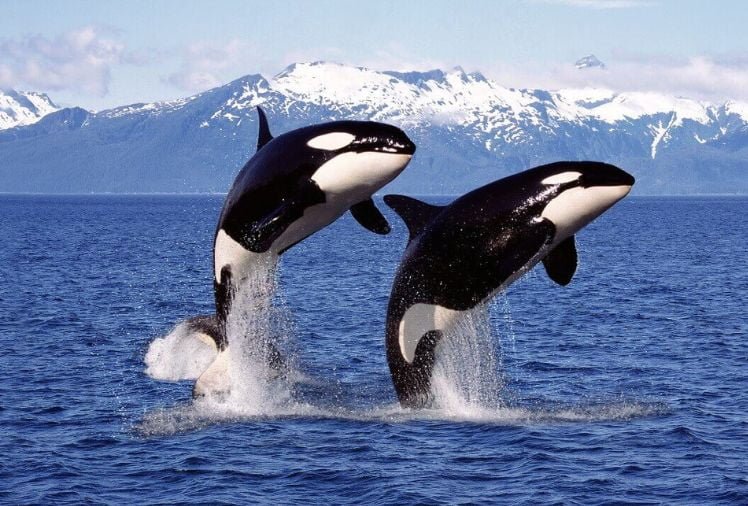
Characteristics
It’s almost impossible not to recognize an orca. Its black back and white underside make it unmistakable. What’s more, each orca has white spots on the back of the dorsal fin that are unique. Don’t exist two orcas with the same spots, it’s like a fingerprint, and in studies, those are used to identify individuals.
As previously mentioned, they measure an average of 30 feet and weigh approximately 3 to 4 tons. Males can reach 5.5 tons and in addition to being larger, their dorsal fin is curved and is larger than that of females, reaching up to around 6 feet in height.
Adult orcas have no natural predator, so if they survive the juvenile phase – the mortality rate among orcas up to 6 months old is high – they can live from 30 to 60 years, with some managing to reach 90!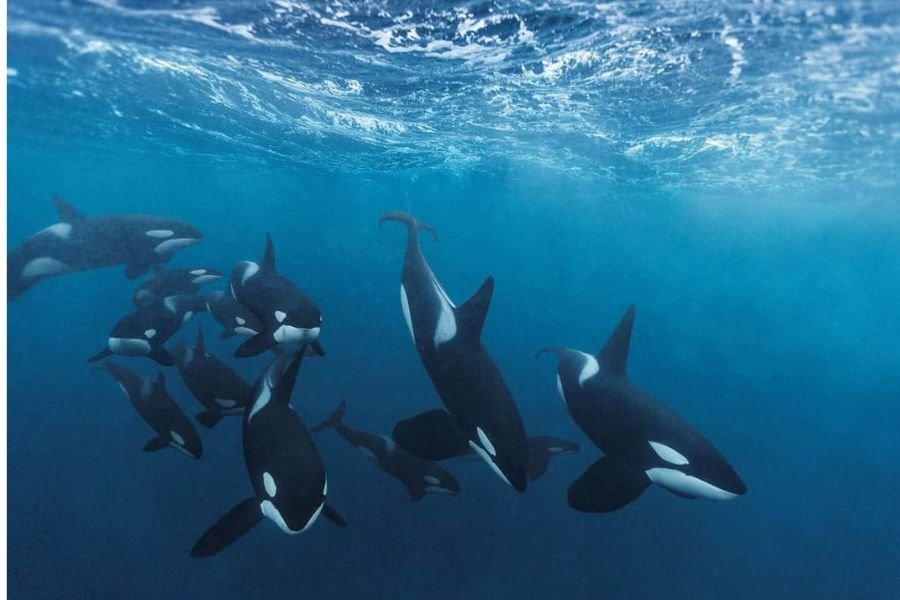
Behavior
Perhaps you were expecting to read about the great predator killer whale, but we got to an amazing part about orcas: their social behavior. They live in groups, called pods, that can have up to 100 individuals, but usually, pods of 10 members are seen. Their social bonds are really strong, they are always together and only separate during the mating season. Like elephants, they form a matriarchal society, that is, it is the older females who lead the pod and transmit knowledge to the younger ones.
There are several reports of pods of orcas that migrate and one of these made a journey of more than 1200 miles, going from Alaska to California. They can do this in search of food and also due to climate change. In 2019, another pod traveled from Iceland to Italy. According to the Orca Guardians, Iceland conservation, “This is the first existing record of orcas migrating between Iceland and Italy in the history of orcas research and, we believe, at over 3230 miles it is one of the longest migratory routes ever recorded to date in the world”.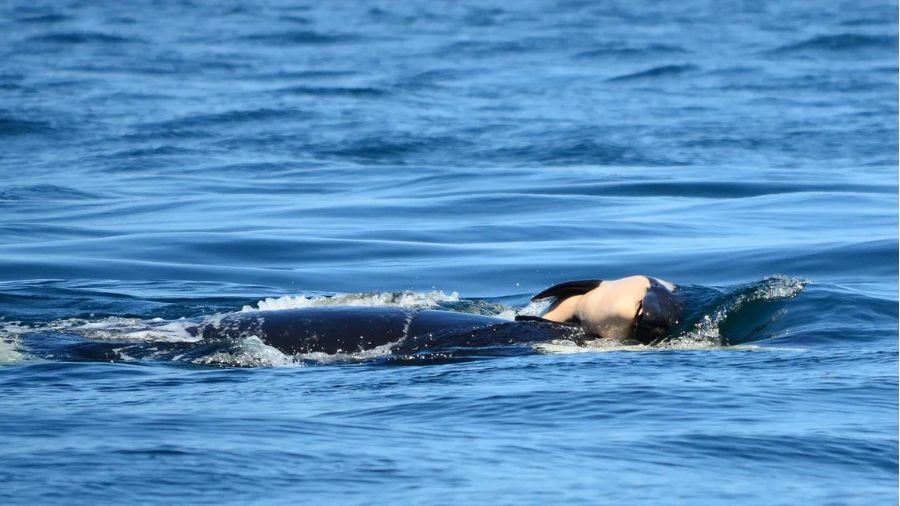
Image: National Geographic Brasil
Grief
Jason Colby, a historian at the University of Victoria and author of the book Orca, brings attention to the strong family ties and complex social behaviors of orcas and human-like feelings, such as grief, for example. In 2018, a mother orca, known as J35 or Tahlequah, spent 17 days carrying the body of her dead calf on her head nearly a thousand miles along the Pacific Northwest coast. This sad situation demonstrates how complex and sophisticated the emotional traits and social behaviors of these animals are.
Believe me: orcas have different dialects to communicate, depending on the region where they live. It can happen that an orca from a certain territory does not understand the dialect of an orca from another territory. But they are capable of learning new ones. Fascinating, isn’t it? Listen to the audio below, it’s fantastic! 🙂
Habitat
They are found in almost all seas on the planet, being one of the places with the highest incidence, Antarctica’s waters. They like deep water but are often seen in coastal areas and on the surface. This is the second most widely distributed mammal on the planet, second only to humans.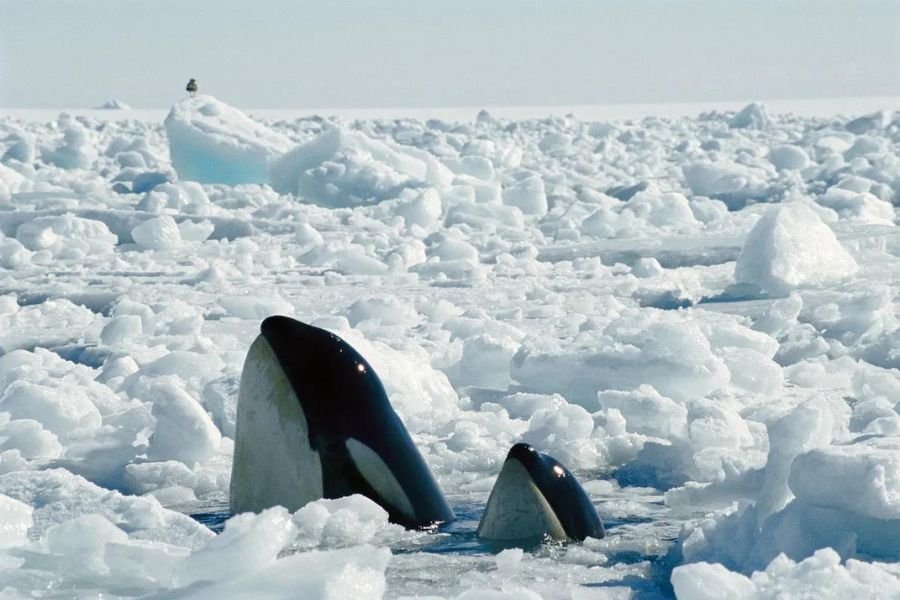
Estimating the number of existing orcas is almost impossible, precisely because of this immense geographic range. It is believed that, currently, there are about 50 thousand individuals, however, this number could be much higher.
But they also enjoy tropical waters. In Brazil, the locals receive these fantastic visitors. Orcas are seen off the coast of many states. In 2022, in the beautiful Rio de Janeiro, a pod of about 30 orcas amazed the region’s locals and tourists. They were there feeding on a school of stingrays.
Feed
The orcas are carnivores, feeding mainly on fish, sharks, seals, dolphins, squid, turtles, and other whales. They even hunt great white sharks and, as mentioned at the beginning of this article, even the largest mammal in the world: the blue whale. They are at the top of the food chain and eat an average of 550 pounds daily. How much food, right?!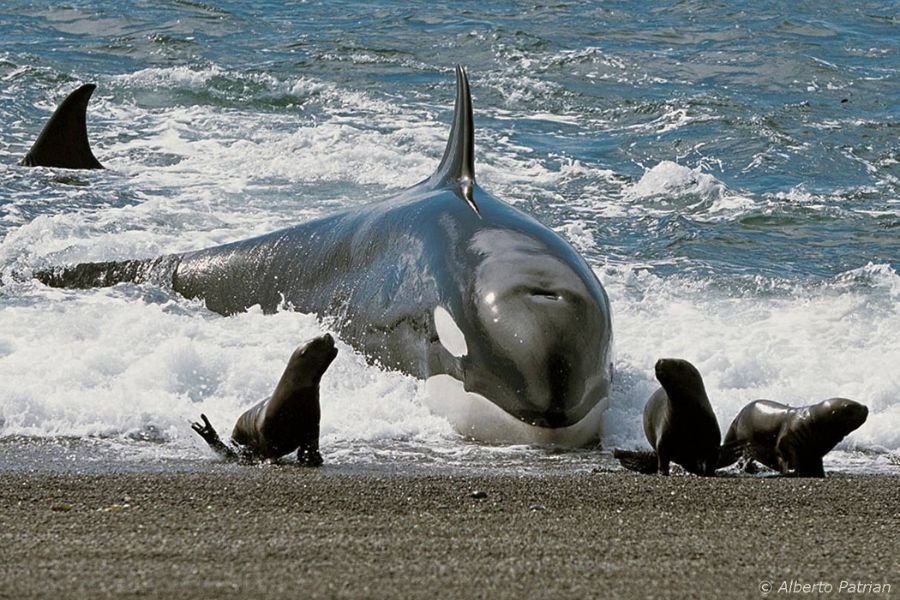
Reproduction
Not so much is known about the reproductive habits of orcas, only that they occur through internal fertilization. They can reproduce from 10 to 40 years of age, with peak fertility being reached at age 20. The gestation period lasts between 11 and 12 months and only one calf is generated in each gestation. The orca’s calf is born around 8 feet and 440 pounds. A big little baby that one, huh?
Are orcas endangered?
As the geographic distribution of these animals is incredibly extensive, it is not possible to state that their entire population is endangered or vulnerable to extinction. According to the International Union for Conservation of Nature (IUCN), these animals are listed as #data deficient#, which means their conservation status is unknown.
Despite this, it can be said that populations in certain regions are indeed endangered due to lack of food, changes in the natural habitat (pipelines’ construction, for example), and sea pollution.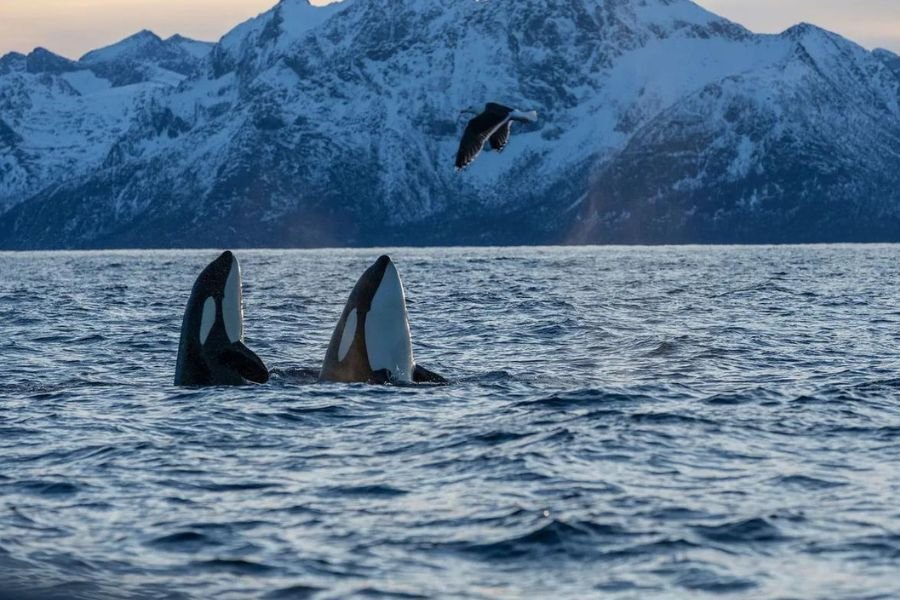
Conclusion
There is no other animal in the wild capable of killing orcas other than us, humans. We are the biggest threats to these magnificent creatures and that’s why knowing about them is so important. Before buying a ticket to an “orca show” at SeaWorld, research about the capture and hunting of these animals and how this is contributing to their population’s decline. Also try to find out how these animals live in captivity and what happened to the star of the movie Free Willy, Keiko, who died of hunger and pneumonia.
Nature is amazingly spectacular and we must protect and respect all living beings that are part of it.

